FILIPINO MINISTRY
Filipino catholics form a vibrant part of our diocese and strongly support the work in our parishes. Each year in a special way the Filipino community celebrate simbang gabi, santo nino, St. Pedro Calunsgod, and San Lorenzo Ruiz. These celebrations are organized through the Filipino diocesan council of reno (fdcr).
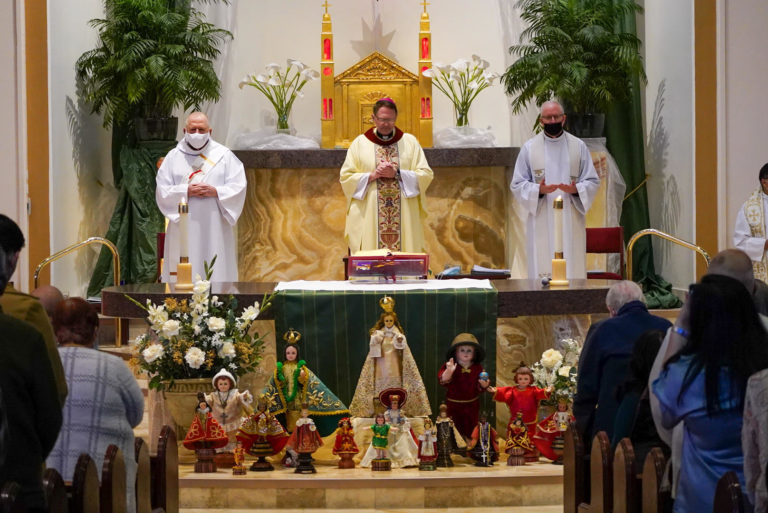
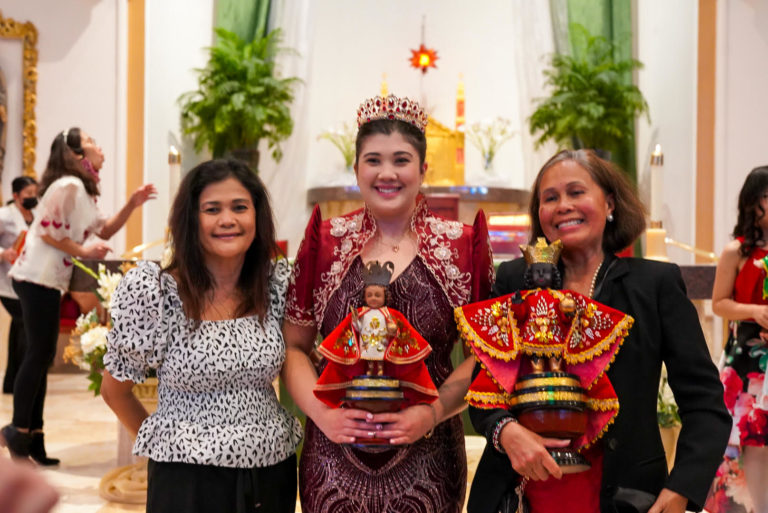
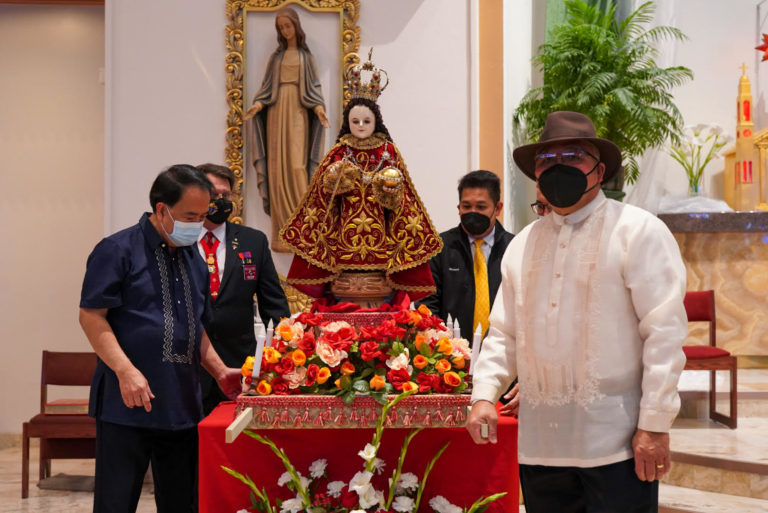
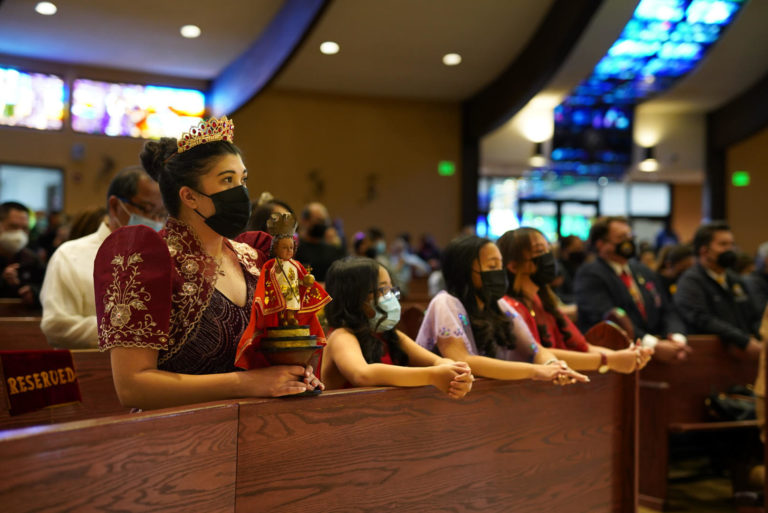
FDCR CONSTITUTION AND BYLAWS

FDCR CONSTITUTION AND BYLAWS
WE, THE FILIPINO CATHOLICS IN THE DIOCESE OF RENO, AWARE OF OUR CHRISTIAN RIGHTS, DUTIES AND RESPONSIBILITIES, UNITE IN ORDER TO ENHANCE INVOLVEMENT OF FILIPINO CATHOLICS IN THEIR RESPECTIVE PARISHES IN THE DIOCESE, TOWARDS CONTINUOUS LAY FORMATION.
ARTICLE I. NAME
The organization shall be known as the Filipino Diocesan Council of Reno, otherwise known as FDCR.
ARTICLE II. OBJECTIVES
The objectives of the council are:
A. To serve as the Pastoral Council of the Filipino Catholic Ministry and to assist the Local Ordinary or his representative (Spiritual Advisor) in ministering to the specific needs of the Filipino Catholic Community.
B. To celebrate annually together with all the Filipino Catholics, their Pastors, and our Local Ordinary the feasts of Santo Niño, San Lorenzo Ruiz, San Pedro Calungsod and Simbang Gabi.
C. To plan diocesan activities which will enhance mutually beneficial relationships among Filipino Catholics and families, building on appropriate Filipino tradition and culture in the American context.
D. To promote priestly and religious vocations.
E. To support the implementation of the Diocesan Plan which focuses on the promotion of Lay Leadership, Youth and Young Adults, and Social Justice.
ARTICLE III. MEMBERSHIP
SECTION 1. Official membership in the council is open to Filipino Catholics, at least eighteen years old, residing in the Diocese of Reno, willing and able to serve in the Council.
A. Definition of Filipino. Anyone who recognizes and admits to be of Filipino heritage.
SECTION 2. Actual membership shall be limited to no more than five (5) representatives from each parish within the Diocese but only two (2) representatives will have voting rights.
SECTION 3. Though it is not necessary that a member of the Council be a member of the parish group or organization, it is preferable that s/he belong to such an organization or at the very least, be endorsed in written form by the Pastor or Parochial Vicar.
ARTICLE IV. OFFICERS AND THEIR FUNCTIONS
SECTION 1. The officers of the Council shall be a Chairperson, Vice Chairperson, Secretary, Treasurer, Diocesan Liaison and the Spiritual Advisor.
SECTION 2. In the event of death or incapacity of the Chairman to perform the duties of his/her office, the Vice Chairman shall become Chairman. Any other vacancies shall be filled temporarily by the Chairman for the unexpired term until the next election.
SECTION 3. The Chairman shall be the Chief Executive Officer of the Council. S/he shall preside at all meetings, create committees, exercise administrative supervision over all elective officers, appoint representatives to any function or undertaking, represent the Council in its external relations with other organizations.
SECTION 4. The Vice Chairman shall perform such other duties as may be assigned to him/her by the Chairman.
SECTION 5. The Secretary shall prepare and keep an official record of the proceedings of all meetings, attend to all correspondence, file all letters or memoranda to or from the Council, send notices of all meetings to all members, keep an updated membership roster and attendance records.
SECTION 6. The Treasurer shall receive and disburse all monies of the Council, establish and maintain accurate and updated records of receipts and disbursements, deposit or withdraw all monies in a reputable banking institution, and thus keep and maintain savings and/or checking accounts for the purpose. The Treasurer shall also issue letters of demand or collection to insure payment of monies owed by other parties to the Council.
SECTION 7. The Diocesan Liaison is an Officer of the Council by virtue of his/her appointment by the Bishop as Episcopal Vicar for the Filipino Ministry. He/she shall act as a liaison between the Chancery and the Council, and advise the Council on Church and Diocesan matters. In the event of permanent disability or incapacity or death, the Council may recommend to the Bishop his/her replacement.
SECTION 8. The Spiritual Advisor is an Officer of the Council by virtue of his/her appointment by the Bishop as Religious Director. He/she shall assist in maintaining guidance and purpose for the Council.
SECTION 9. An Officer shall forfeit his or her office after three (3) consecutive unexcused absences and after due process to be determined by the Council and its Advisor.
SECTION 10. In the event of a vacancy by forfeiture, the Chairman shall appoint a successor who shall serve the unexpired term until the next election without prejudice to the provisions of the above mentioned.
ARTICLE V. TERMS OF OFFICE
SECTION 1. The term of office of the officers shall commence upon taking their oath on the Feast of San Lorenzo Ruiz. All officers shall hold office for a term of two years. With the exception of the Chairman, who shall hold office for a maximum of two consecutive terms, all officers may be re-elected for as long as they are willing and able.
SECTION 2. The term of office of all officers shall terminate upon the induction of the newly elected officers.
ARTICLE VI. VOTING RIGHTS
SECTION 1. The right to vote in the Council meetings is limited to all officers and two designated representatives from each member parish. However, discussions are open to all present.
SECTION 2. Voting shall be “Viva Voce” unless the members present decide otherwise.
SECTION 3. Voting on minor issues as determined by the Council is deemed approved by a simple majority of all present in the meeting.
SECTION 4. Voting on a major issue as determined by the Council is deemed approved by the simple majority of the voting members as described in SECTION 1 and 2 of this Article VI.
ARTICLE VII. FUNDS
SECTION 1. No funds shall be disbursed without approval by the Council.
SECTION 2. Disbursement of funds by checks shall be signed and countersigned by any two of the following signatories: Chairman, Treasurer and Diocesan Liaison.
SECTION 3. The Chairman may authorize disbursement of funds which shall not exceed the amount of one hundred dollars ($100.00)
ARTICLE VIII. MEETINGS
SECTION 1. Regular Meeting: There shall be a regular meeting of the Council every second (2nd) Monday of the month at 6:00 pm at the place designated by the Chairman.
SECTION 2. Special Meeting: A special meeting may be called by the Chairman and day and time to discuss special matters.
ARTICLE IX. AMENDMENT
SECTION 1. The Constitution and Bylaws may be amended by a vote of two thirds of the members present in a meeting called for the purpose. Notice of such amendment or repeal shall be furnished to the members of the Council before the meeting.
ARTICLE X. RATIFICATION
SECTION 1. This is to certify that this Constitution and Bylaws is adopted by two thirds vote of all members present in a quorum during the special membership meeting held on July 15, 2013.
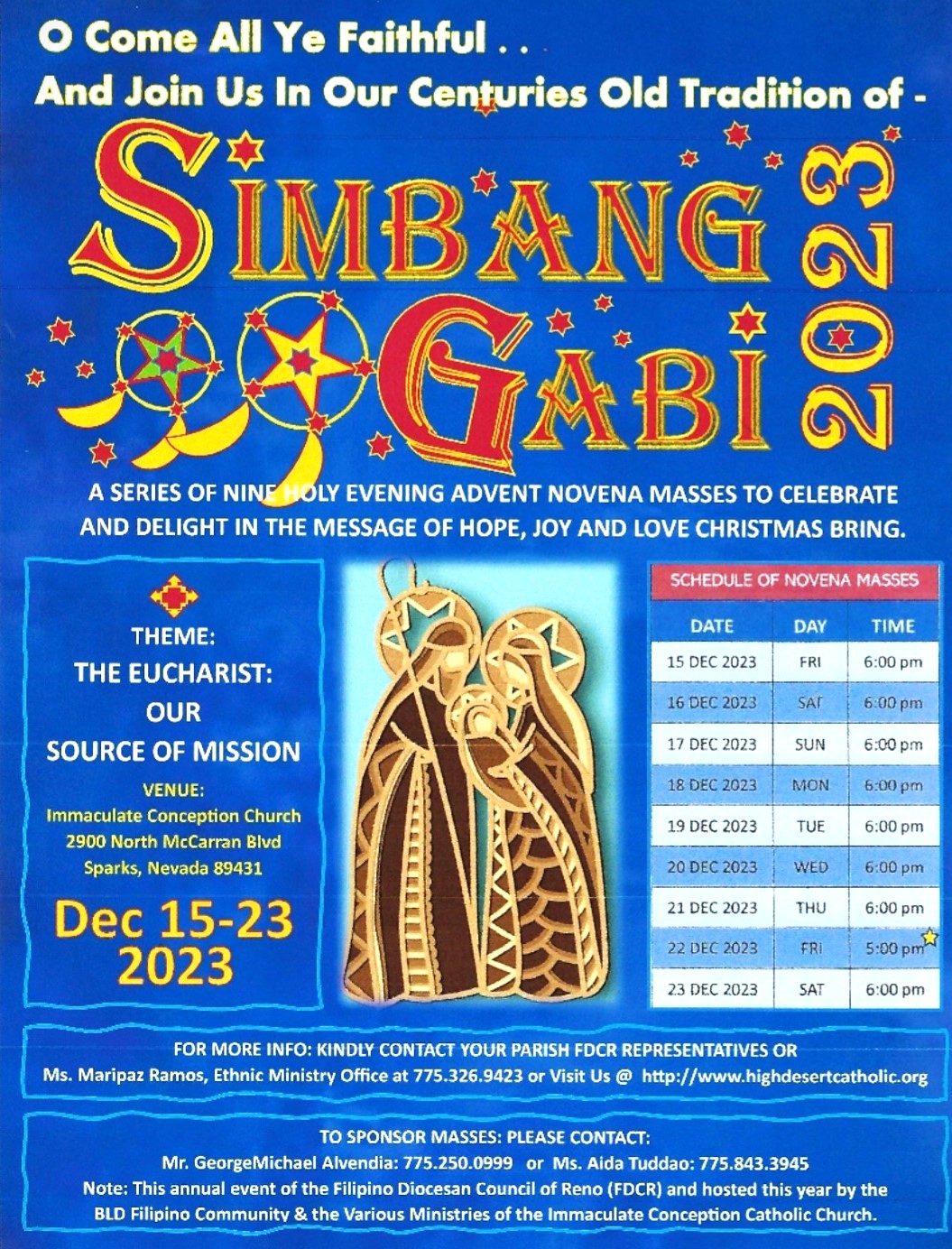
SIMBANG GABI 2023
Main Theme: “The Eucharist: Our Source of Mission”
By: Maripaz Ramos
Simbang Gabi is a typical Filipino way of preparing for the great feast of
Christmas. The tradition was brought to the Philippines by Spanish evangelizers from
Mexico. Originally, it popularly came to be known as Misa Aguinaldo. De Aguinaldo
means gift, which is peculiar to Christmas. That is why, the faithful wake up early
morning for nine days before Christmas to join in the celebration of the dawn Mass. The faithful make this their “Aguinaldo” to God for the great gift of Jesus. The practice can also be understood as the preparation of the faithful to receive from God the great gift or “Aguinaldo” of Christmas, which is Jesus, the Savior of the world.
But for Filipino Catholics, Simbang Gabi is above all an expression of their filial
devotion to Mary, the Mother of God. For nine consecutive days, they join and
accompany her, so to speak, as she awaits the birth of her Son. For this reason, the
Masses on these days are celebrated as solemn votive Masses in her honor.
Here in our diocese of Reno, we have celebrated this Filipino tradition for the
past 27 years. This year, the celebration will begin on December 15th at 6:00p.m. at
Immaculate Conception Catholic Church in Sparks with a mass celebrated by our Most Rev. Daniel H. Mueggenborg, Bishop of Reno. The celebration continues through
December 23rd. at 6:00p.m. except Friday December 22 nd . Simbang Gabi will be
celebrated at 5:00p.m at the same parish. If you would like to experience Simbang Gabi, I encourage you be an active part of this beautiful celebration.
As we prepare for the celebration of the birth of our Savior Jesus Christ through
the unique Filipino Catholic tradition of Simbang Gabi, may the faith and devotion of
Mary, the Mother of God, inspire us to receive in our hearts and home God’s surpassing Aguinaldo in the person of Jesus Christ. Let us keep her company through prayer and good works, so that she may also keep us company as we journey toward the fulfillment of God’s promise of peace in our nation and in the world.
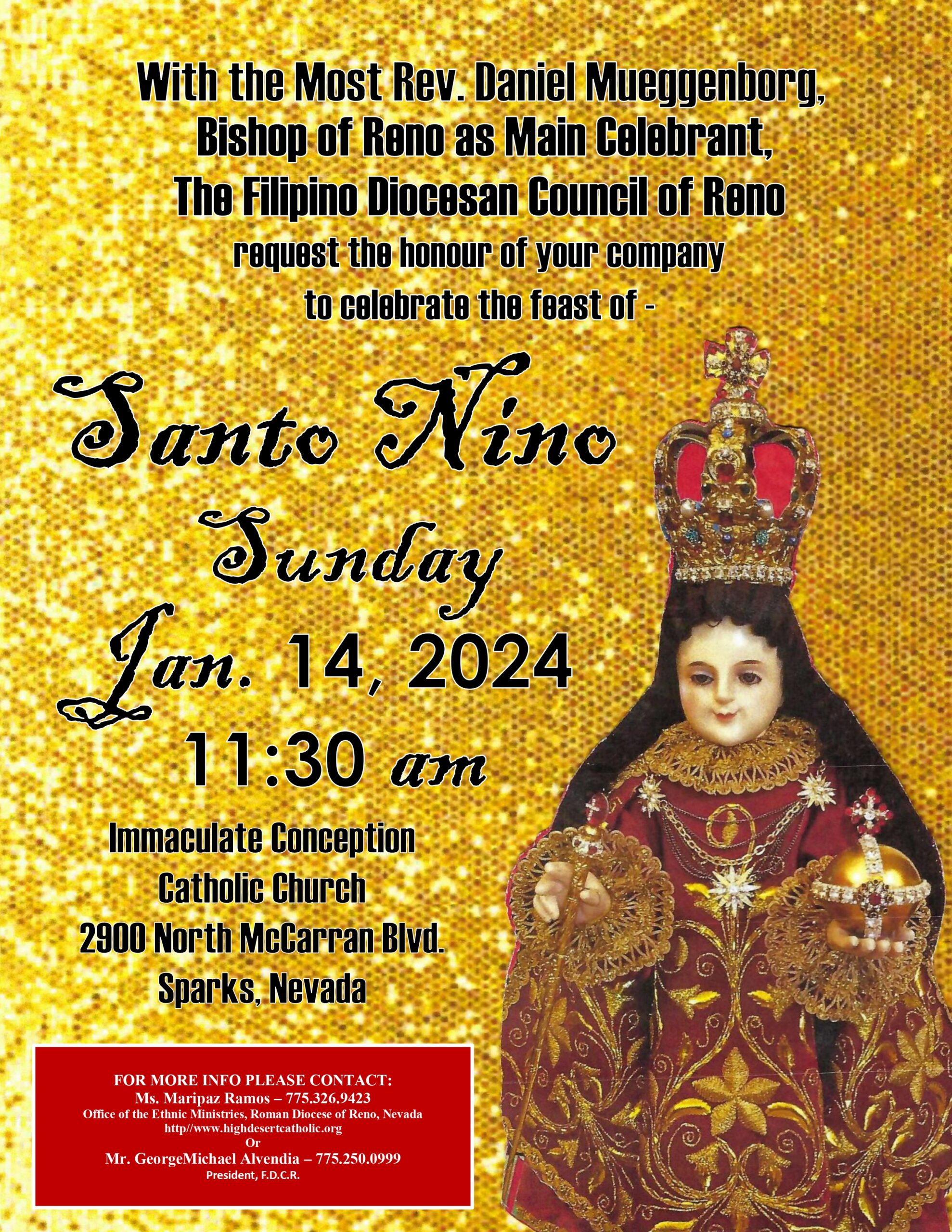
SANTO NIÑO (THE HOLY INFANT JESUS)
“THE ETERNAL KING OF THE PHILIPPINES”
The most revered image in the Philippines – Santo Niño de Cebú is an image of the Child Jesus much venerated as miraculous by the majority of Filipino Catholics and revered as the symbol of the Catholic Faith in the country. The oldest Christian image in the Philippines, it was originally given in 1521 as a baptismal gift by Portuguese explorer Ferdinand Magellan to Hara Humamay, the chief consort of Rajah Humabon, along with a statue of the Virgin Mary, and a bust of depicting Christ as Ecce Homo.
Pope Paul VI granted a Canonical Coronation of the statue on 28 April 1965 and later raised its shrine to the status of Minor Basilica on 2 May 1965 via his Papal bull Cubanula Religionis to mark the 400th anniversary of its arrival in the islands.
The devotion to the Santo Niño is common with the worldwide veneration of the Infant Jesus of Prague. The image is found in many houses, business establishments, and public transportation. Traditionally, the image is often dressed in one of two colors: red is common for domestic images, while green – symbolizing luck – is worn by those enshrined in businesses. It is also often dressed in miniature costumes that often reflect the profession of its devotees.
Come and watch the dramatization of the history of the Santo Niño and the Christianization of the Philippine Island. This is a celebration for all people! A celebration meant for the family! All are invited to bring their statues of Santo Niño to be blessed.
For more information, call Maripaz Ramos at 775-326-9423, or Suzanna Corral at 775-326-9415 in the Ethnic Ministry Office.

SAN LORENZO RUIZ
San Lorenzo Ruiz is the first Filipino Saint. He is also the first Filipino martyred for the Christian Faith. Lorenzo Ruiz was a layman, married, and had two sons and a daughter. Born in Binondo, Manila, about 1600’s. He was educated in the school of the Dominicans. In 1636, he was falsely accused of murder and sought asylum on board a ship with three Dominican priests. Upon landing in Japan where Christians were being persecuted, he was arrested and imprisoned together with his companions. He underwent inhuman tortures and valiantly confessed his Christian Faith. Refusing to renounce his faith, he told his executioner that he was ready to die for God and give himself for many thousands of lives if he had them. He and fifteen companions, martyred in the same persecution, were beatified by Pope John Paul II in Manila on February 18, 1981, and elevated to full honors of the altar by canonization on October 18, 1987, in Rome.
For more information, please contact Maripaz Ramos, at the Office of Ethnic Ministries at (775) 326-9423 or 775-326-9415.
Pedro Calungsod was born in 1654 in Ginatilan, Cebu, Philippines. When he was 13, he joined the Spanish Jesuit missionaries. He loved church and wanted to share his faith with others so he became a catechist. Due to his efforts, many people were baptized and converted. In 1683, Pedro went to the Marianas Islands along with his peers and Father Diego Luis de San Vitores to spread the gospel to the native people (the Chamorro people), to evangelize, and teach them about God.
During this time, the missionaries faced many hardships, including persecution. The missionaries persevered and continued to announce their faith. Rumors began to spread, stating that the water they were baptizing with was poisoned, many people became angry and turned against the missionaries. Pedro Calungsod died on April 2, 1672, after he baptized a newborn baby. Pedro could have left and survived, however, he decided to stay by Father Diego’s side. Pedro was struck on the chest with a spear and was provided absolution by Fr. Diego before being killed himself. Their bodies were thrown in the sea.
“Pedro’s companion missionaries said that he was kind, a devout catechist, and someone who was unafraid of sharing his faith, even if it meant Death.”
At his beatification, Pope St. John Paul II told the crowds gathered for the celebration, “From his childhood, Pedro Calungsod declared himself unwaveringly for Christ and responded generously to his call. Young people today can draw encouragement and strength from the example of Pedro, whose love of Jesus inspired him to devote his teenage years to teaching the Faith as a lay catechist.”
Pope Benedict XVI canonized Pedro in 2012.
